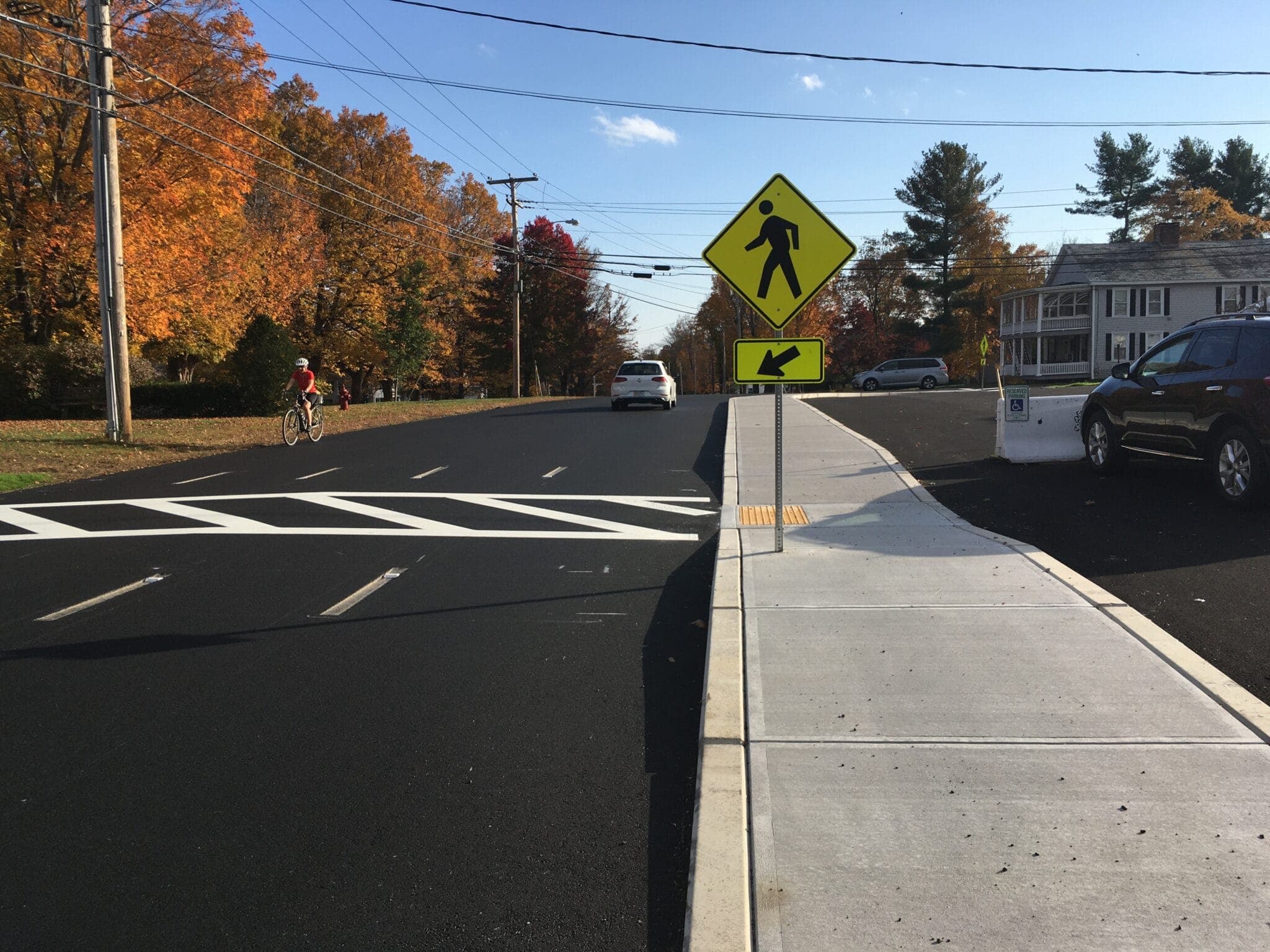
News
By State Smart Transportation Initiative, June 18, 2024
The state DOTs in California and North Carolina have found innovative ways to manage and maintain Complete Streets projects.

California
California’s Road Repair and Accountability Act of 2017 (SB 1), required all SHOPP projects to incorporate Complete Streets elements, wherever feasible. That meant creating an inventory base with consistent data collection to effectively track and incorporate these elements. In 2018, Caltrans began data collection through a survey of existing Complete Streets assets including sidewalks, bikeways, and crosswalks. The push to survey existing assets acted as a starting point for the agency to track and develop targets for existing and future assets. The initial survey exposed additional features that will later be incorporated, like bus shelters, pedestrian lighting, street trees, and shade structures.
In 2020, a one-time funding reservation of $100 million was set aside for the SHOPP to construct and maintain Complete Streets facilities based on the existing inventory. One year later, the agency created targets for each district to track both the new and existing Complete Streets assets as part of Director’s Policy 37, which created a new program for highway maintenance projects.
Complete Streets tracking forms were developed in 2022 so that performance targets could be effectively implemented and measured. The forms require coordination between engineers and Complete Streets coordinators to guide highway maintenance projects, train new roles and scopes, and to inform future updates.
Now, Caltrans offers several different maintenance options. For maintenance agreements in general, some local agencies pay and maintain with vested interest while others sign delegated maintenance agreements where Caltrans pays for the project and local agencies maintain. Regardless of the type of maintenance agreement, Caltrans emphasizes the need for local partners and community members to be involved early and often in the maintenance agreement process in order for the agreement to be strong and effective.
Caltrans is currently creating working groups to pull knowledge and skills for guidance material, focusing on strategies to increase funding for CS features. Updated maintenance manuals need to be revised to incorporate Complete Streets elements in official guidance. For example, CS is already incorporated as part of bridge projects where the scope is feasible. Caltrans continues to work towards an asset inventory approach while increasing staff capacity, materials, and equipment with updated guidance.
North Carolina
The North Carolina DOT convenes interdisciplinary working groups to address asset management and maintenance challenges. The workgroups play an important role within the Complete Streets review process to address main barriers and strategies to incorporate the maintenance of Complete Streets facilities throughout the project planning, design, and implementation process.
A main challenge the workgroups identified was inconsistent coordination between scheduled maintenance activities and local plans. To improve communication, NCDOT developed draft guidance to identify Complete Streets opportunities throughout the highway maintenance improvement process. The goal of the guidance is to better facilitate conversation and convening between different divisions and sectors on these issues to create sustainable impact. This also improves the chances for successful funding of Complete Streets facilities if they are flagged early in the project planning process. The guidance and communication between the flagged maintenance opportunities includes costs, alternatives, and options with required documentation and reporting through to project completion.
The NCDOT also aimed to address maintenance issues related to Complete Streets elements in unincorporated areas. An analysis with their latent demand tool determined the effects of the state taking over unincorporated areas' maintenance responsibilities. The tool, the Complete Streets Activity Estimation Tool, was used to analyze pedestrian and bicycle network infrastructure data to evaluate and estimate the latent demand in areas categorized as low, medium, or high activity areas. The analysis was in accordance with planned and existing multimodal facilities for the next ten-year funding cycle. This resulted in internal policy discussions to make changes to the municipal code, discussions on maintenance agreements for earlier planning and to address funding issues, and working with local municipalities to enter agreements for facilities in unincorporated areas that they expect will later be in their jurisdiction as populations grow.
The Centers for Disease Control and Prevention provided support for this project under cooperative agreement OT18-1802 supporting the Active People, Healthy NationSM Initiative, a national initiative led by the CDC to help 27 million Americans become more physically active by 2027. Learn more: https://www.cdc.gov/
Related News

© 2025 Smart Growth America. All rights reserved
Site By3Lane Marketing
















